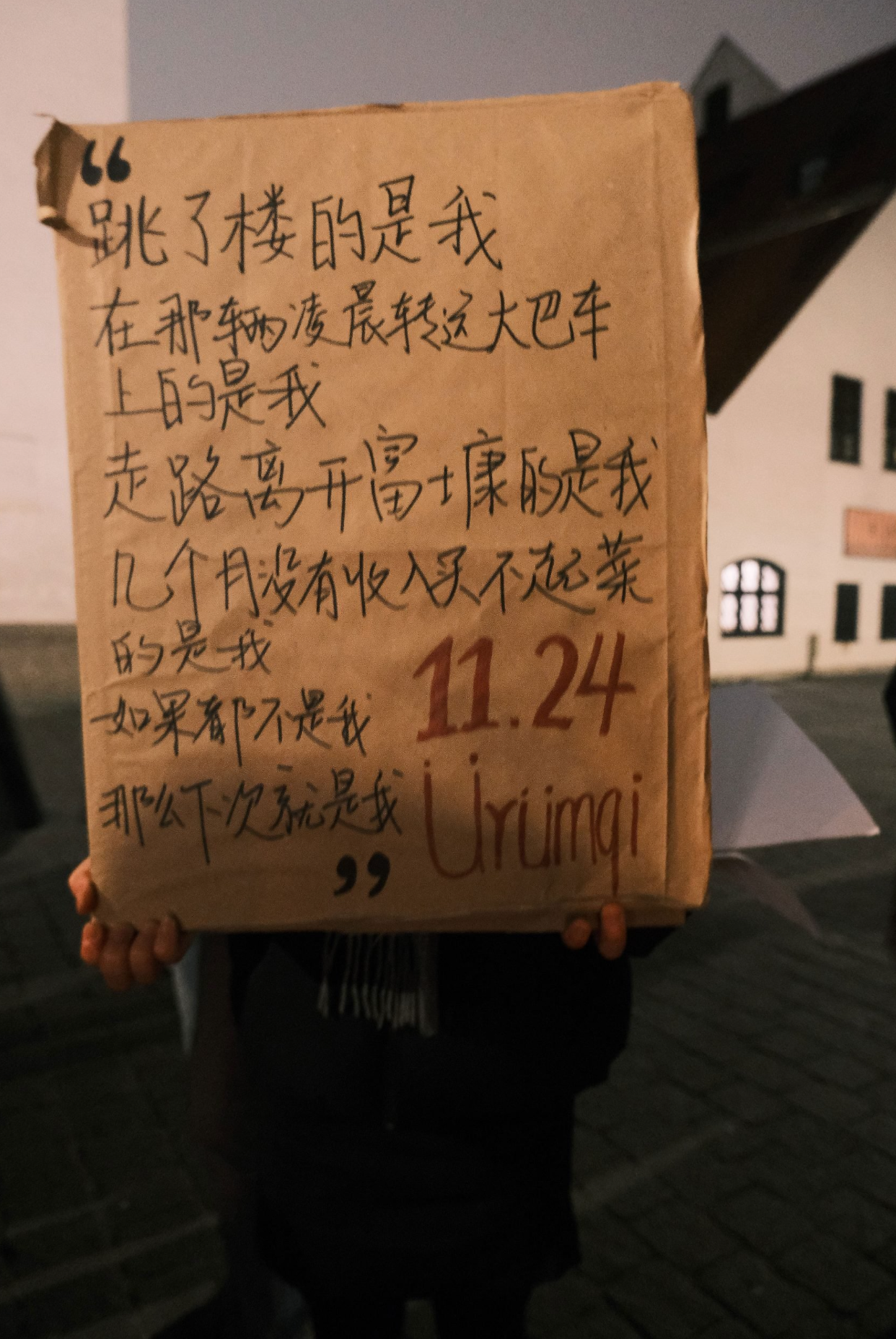Fill in the Blank: China's White Paper Protests
Splashed across numerous international publications last November was an image of a young man in an orange jacket, a blue hoodie and a black face mask, surrounded by a crowd of people on a city street, staring fixedly at the camera. Holding up a white piece of paper with his right hand, his left points determinedly at… us. This direct address seems to demand something of the viewer, but as his sign is blank, his message remains elusive.
The hundreds of people who surround him also hold white pieces of paper, suggestive of a shared purpose. Static documentary evidence of a crowd could plausibly be read as a rally, a protest, a celebration. The choice of white, however, and its association with mourning in China, helps characterise the event as a vigil. And that is exactly what it was, or at least how it started.
These public gatherings began as a way to remember the ten lives lost in Xinjiang province on 24 November 2022, after a fire broke out in an apartment building where residents struggled to escape due to movement-control obstacles introduced to prevent the spread of Covid-19. While the gatherings—like the one in Shanghai on Wulumuqi Road (named after Ürümqi in Xinjiang)—started as a way for a grieving public to mourn, they quickly transitioned to large-scale protests. Many directly called for an end to President Xi Jinping’s stringent zero-Covid policy, while others rejected his repressive measures and, in some cases, his regime.
Read the full article via Mekong Review here.
